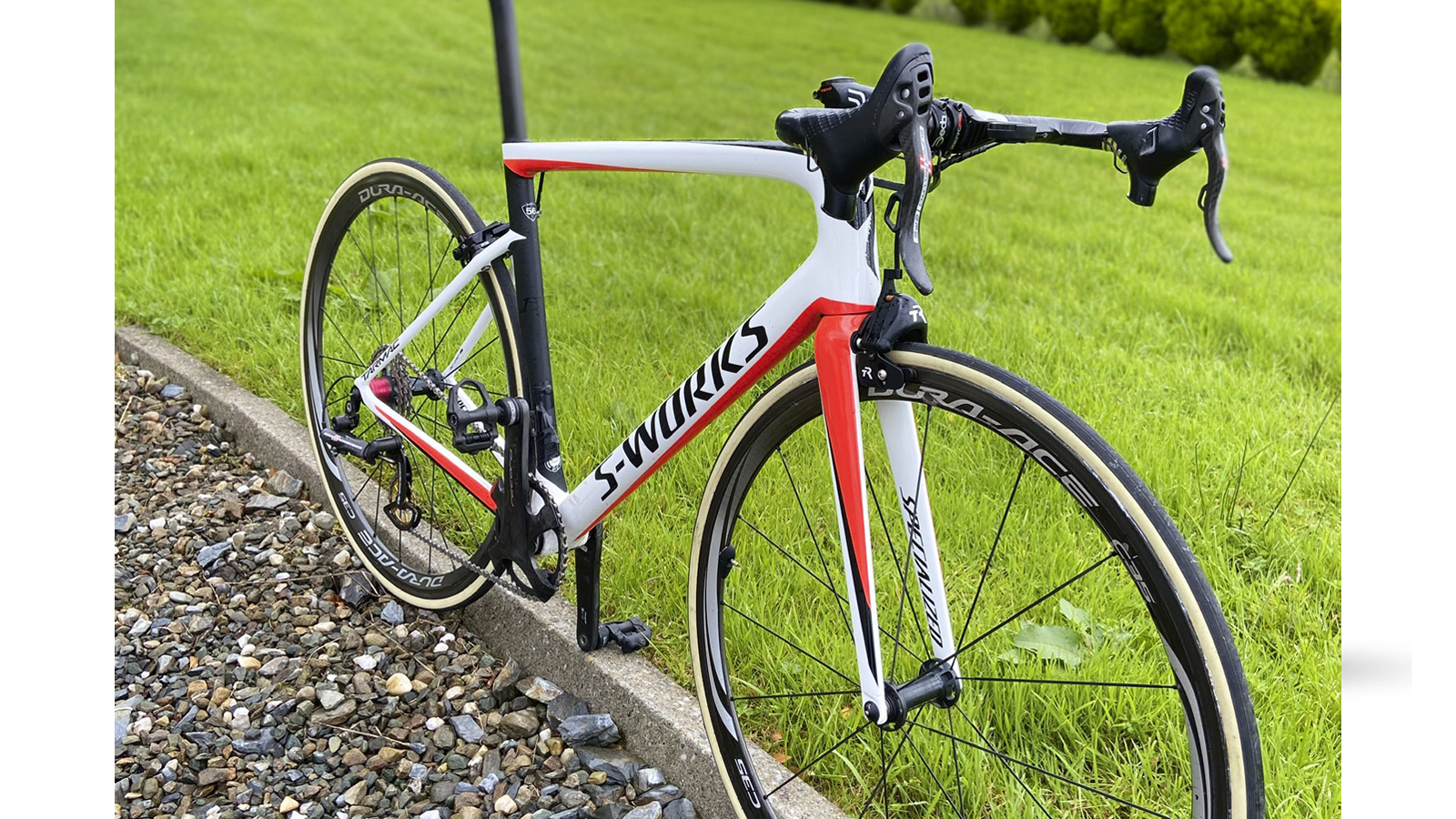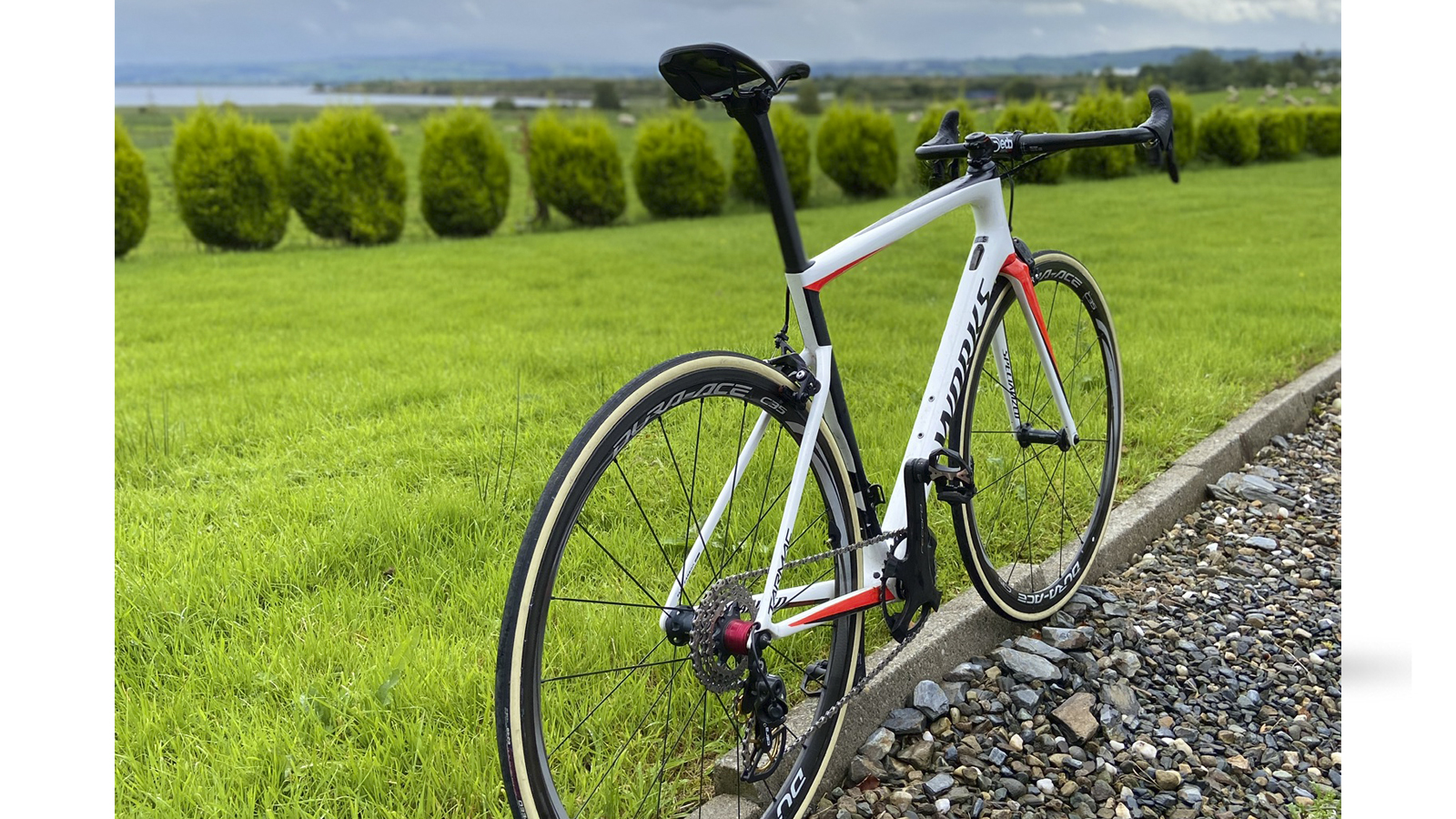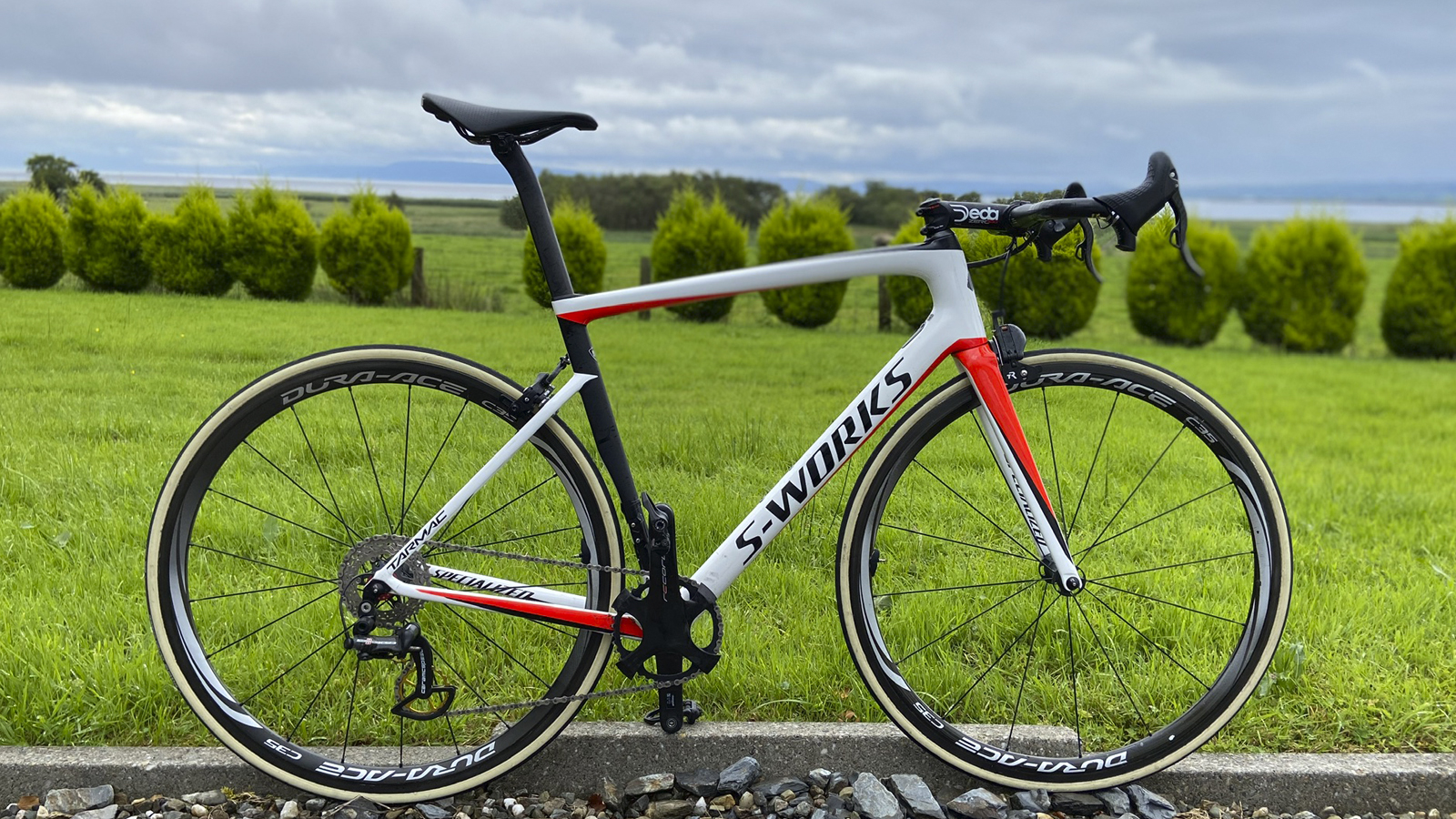Three gears and sawn-off handlebars: The bike that broke Contador's Everesting world record
Inside the bike and mind of Ronan McLaughlin, the Everesting world record holder



The premise of marginal gains is nothing new to cycling. A term synonymous with the upper echelons of the sport, it's in the amateur ranks where the most intriguing marginal gains can be found. Such as the ever-popular hill-climbing season here in the United Kingdom, where riders go to extreme lengths to reduce weight and CdA (coefficient of drag x area) from their setup.
You probably read that Ronan McLaughlin recently smashed Alberto Contador's Everesting record by 23 minutes for a time of seven hours and four minutes, more than an hour faster than his previous attempt just two weeks prior. Setting out to just break the eight-hour barrier that he so agonisingly missed previously, McLaughlin knew the record was in sight but affirmed that the sub-eight-hour mark was the primary target.
Of course, a short single-effort hill climb - as often is the case during hill climb season - will see a benefit from increased power to weight (or power to CdA). But when you extrapolate that out into a seven-hour effort, the gains can become anything but marginal.
"I actually worked out that had I not made the aerodynamic gains for the descent, I would have lost a minimum of 10 seconds per descent and that would have totalled up to over ten to fifteen minutes over the whole ride, maybe even as much as the ~23 minutes I took the record by," McLaughlin explained to Cyclingnews.
Everesting bike specs
Frameset
Sure, the new Tarmac SL7 has arrived, but don't let that detract from what a great bike the Tarmac SL6 is. Our comparison piece pits the SL6 vs the SL7 and found the SL6 to be the lighter bike. McLaughlin would ordinarily run the SL6 with Aerofly II bars but admits they're not the lightest.
- Specialized S-Works Tarmac SL6 (size 56cm)
Cockpit
The cockpit is the most noticeable customisation made by McLaughlin. Replacing the Aerofly II handlebars with 3T Ergosum bars, to which he then took a hack saw to remove the drops. A Deda Team Zero stem connects the bar to the frame, inside which the EPS Interface is located for increased aerodynamics.
- 3T Ergosum handlebars with the drops hacksawed off
- Super Record EPS 11spd shifters
- Deda Team Zero -17-degree stem with EPS interface internally mounted
Groupset
Hacking his usual setup, McLaughlin swapped the traditional 2x12 setup of his Campagnolo groupset in favour of a very event-specific 1x3 configuration. Removing the outer chainring, McLaughlin was left with a single 39T chainring upfront, which he paired with a modified cassette which does away with most of the sprockets, leaving just three speeds to choose from.
Get The Leadout Newsletter
The latest race content, interviews, features, reviews and expert buying guides, direct to your inbox!
- Campagnolo Record 12spd cranks with 39 tooth chainring
- Record EPS 11spd rear derailleur with Ceramic Speed OSPW and Wolf Tooth Road Link hanger extender
- Adapted cassette: 25, 28 & 32 tooth sprockets with single speed freehub spacers
- Silca Super Secret Chain Wax
Wheels
Upgrading from his original attempt, McLaughlin switched to Dura-Ace C35 tubular wheels, which were inflated to specific front and rear pressures.
- Shimano Dura-Ace C35 tubular wheels with Vittoria Corsa Speed 2.0 tyres 23c (94psi front / 96psi rear)
- Silca Speed Shield valve covers
Other
- Specialized Power ARC Pro saddle
- Assioma Favero duo power meter
The complete bike tips the scales at 6.2kg.
We caught up with McLaughlin to go into detail on his choices.
"All the parts removed were obviously going to be weight saving but also aerodynamics played a large part in the decision making," he explained. "By removing the front derailleur, bottle cages, bar drops, one chainring and bar tape, I would have saved grams of weight but also a significant amount of grams of drag. At the high speeds I was descending, these small changes can make a very large difference because aerodynamic drag is related to the square of velocity. So every time my speed doubled on the descent my drag was quadrupling just sitting upright would have made a huge difference.
"I had been planning the Everesting for quite some time, probably seriously since March or so. But because the bike I used for Everesting is also my everyday bike all the changes I made could only be done very last minute. Most of the changes I made the night before except cutting off the drops of the handlebars which I did on the morning of the challenge."
McLaughlin left no stone unturned in the pursuit of optimisation, although he admits budget became the biggest constraint, as exampled by saddle choice. Instead of using the carbon-railed Specialized Power Arc saddle, he couldn't justify the gram saving vs expenditure and settled for the titanium-railed Power Arc Pro.
Conveniently, he managed to save the same number of grams by taking a hacksaw to his 3T Ergosum handlebars.
"One unfortunate oversight I made due to the last minute nature of the modifications was leaving the cables on the front of the bike very exposed," he admits. "This was far from ideal and quite disappointing to me when considering the lengths I went to on the rest of the bike."
McLaughlin didn't just chop bits off his bike in the pursuit of free speed, though. Throughout the planning phase, the former Continental pro took to data modelling in order to calculate pacing strategies and estimate completion times.
"The very first and most frequent model I used was the everesting.cc calculator to determine number of reps required etc. The everesting.cc calculator also has a model to help calculate time to completion. This was incredibly accurate and for both my Everestings it was accurate to within roughly 2%.
"I also used Best Bike Split and a number of Excel sheets I have for calculating aero savings, weight savings and actual pacing. I had researched at least 10 different pacing strategies. However, I would say all this modelling was more so for my confidence going into the event rather than a pacing strategy to rigidly stick by. On the day I used RPE [Rate of Perceived Exertion] and heart rate as my limiters with an eye on wattage rather than rigidly sticking to a wattage plan."
When it came to the finer details of his setup, McLaughlin took to the Notio Konect, and on-bike aero drag measuring unit. By normalising aerodynamics, Mclaughlin was able to accurately measure the best tyres and pressures for rolling resistance.
"I recognised that tyre pressure would be very important in this challenge. Rolling resistance was going to be a major factor and so both tyre choice and pressure were dialled as much as I could."
McLaughlin's focus wasn't limited to the bike, though, and McLaughlin applied the same scrutiny to his choice of clothing, helmet, footwear and dietary intake.
"My dietary intake in the days before the challenge was optimised to provide sufficient energy but to also ensure I wasn’t carrying any excess weight," McLaughlin explained. "I also paid close attention to hydration, again to ensure I was fully 'topped up', but not overly hydrated and as such carrying excess fluids.
"I really went into detail on my clothing choice. I used aero overshoes although I was quite disappointed with these that once they got wet in the rain they wouldn’t stay in position and started to flap quite a bit on the descent. Luckily I was able to take them off, one per descent on two descents in a row, and even more luckily, I had preempted this by wearing aero trip socks below them just in case.
"I also choose to wear a Pactimo Ascent Flyte suit, which, as a one-piece race suit is more aero than standard jersey and shorts but also weighed quite similarly, has pockets on the rear for my phone which provided the soundtrack for the ride.
"Lastly, I chose a Kask Infinity helmet as this has the adjustable vent on the front, for the ascents I opened the vent and then immediately upon turning at the top I closed the vent, zipped up the Flyte suit and got down into a super tuck all the way to the bottom. I was actually able to get my head right down level with the Garmin and so at least the A in my CdA was as low as could be for every descent."
McLaughlin is raising money via GoFundMe for Community Rescue Service (CRS), which is a charitable search and rescue organisation operated by volunteers from communities across Northern Ireland. So far, he has raised £5547 of the apt £8848 target. Donations can be made at https://www.gofundme.com/f/22imvh8w1c
You can view the record-breaking ride on Strava: https://www.strava.com/activities/3840715465

Josh is Associate Editor of Cyclingnews – leading our content on the best bikes, kit and the latest breaking tech stories from the pro peloton. He has been with us since the summer of 2019 and throughout that time he's covered everything from buyer's guides and deals to the latest tech news and reviews.
On the bike, Josh has been riding and racing for over 15 years. He started out racing cross country in his teens back when 26-inch wheels and triple chainsets were still mainstream, but he found favour in road racing in his early 20s, racing at a local and national level for Somerset-based Team Tor 2000. These days he rides indoors for convenience and fitness, and outdoors for fun on road, gravel, 'cross and cross-country bikes, the latter usually with his two dogs in tow.